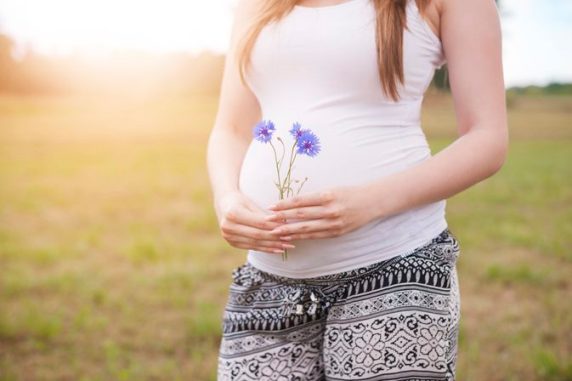Female Hormones: What are they and what are their function?
Estrogen and progesterone are the two kinds of female hormones. What are they and what are their function? Female hormones are involved in many more aspects of health and the body than we think. We tell you why they are so important.
Female hormones, we hear constantly about them, but what are they, and what role they play in the functioning of our body, how are they formed? These are some of the questions that we will try to answer to better understand how our body works.
Table of Contents
What are Female hormones
Female hormones determine the characteristics of a woman’s body. As noted, there are two kinds of female hormones and, thereafter, different types: estrogen and progestin. Among the first, the most important is estradiol, and among the latter, progesterone.
Female hormones are formed from cholesterol, in the cells of the ovaries that are grouped in so-called inside which follicles and mature eggs. During pregnancy, the way the placenta with the function of protecting the uterus. These hormones are also present in men, since for example, the adrenal glands secrete, even in small quantities.
For the formation of hormones, it is necessary to stimulate pituitary ovaries with two others, the gonadotropes (FSH and LH). For these hormones are released, pituitary is stimulated again another hypothalamus releasing hormone (nervous system).
The amounts of hormones called gonadotropes vary throughout the menstrual cycle (28 days). Thus, during the first 14 days, favor the development of 6 to 12 follicles and stimulate the formation of estrogen, which is increasing the mucosa of the uterus and fallopian tubes to facilitate a possible pregnancy.
At 7 days, only one follicle will grow, while the rest will atrophy. Approximately half of the menstrual cycle, levels of both hormones are elevated, especially LH, which favors the expulsion of the egg and makes our body to secrete estrogen and progesterone, which in turn increases the secretion of glands lining of the uterus and the fallopian tubes for a possible fertilized egg.
In the event that the egg does not fertilize, the secretion of the two hormones drops abruptly, leaving condition causing the uterus and part of the lining break down and is expelled with blood (menstruation).
Female hormones function
From hormones classes let’s see what are its main features.
Started by estrogen:
- During puberty increases the size of the female reproductive organs (uterus, fallopian tubes, vagina, ovaries) and appears breasts and hair in the armpits and pubic. Changes in which estrogens are involved.
- Estrogens also favor the formation and growth of bones.
- Estrogens stimulate the formation of protein.
- These hormones fat deposited under the skin and in the buttocks, breasts and thighs.
- Estrogens are responsible for soft and smooth texture of the skin.
- Favor the retention of water and salt.
Meanwhile, progesterone:
- Reduce uterine contractions to prevent expelled if the egg fertilization.
- This hormone is responsible for developing breast cells that secrete milk.
- Increases the excretion of water and salt.
There are also another hormone Testosterone which is mainly male hormone but it is very important for the sexual health of women:
- It plays an important role in the production of female estrogens
- Helps maintain libido
- Helps maintain bone density and muscle mass
How do menopause and age affect female hormones?
Estrogen
During perimenopause, estrogen levels are altered and become unpredictable. In the end, estrogen production drops to a very low level.
Progesterone
The production of progesterone is interrupted when there is no ovulation and after the last menstrual cycle.
Testosterone
- Testosterone levels reach their highest level when the woman is 20 and from that moment they begin to decrease slowly. It maintain a medium level until the onset of menopause.
- The ovaries continue to produce testosterone, even when there is no estrogen production.
- The production of testosterone by the adrenal glands decreases with age, but continues after menopause.
Alteration of female hormones during the menstrual cycle
First week
During the first week of the menstrual cycle, the level of estrogen begins to increase steadily. After menstrual cramps, increased estrogen causes an increase in energy, improves mood and optimism of women and stimulates brain activity. In addition, it increases in women the desire to converse and socially and sentimentally, with others.
Increased estrogen may cause a slight decrease in appetite, so the woman prefers to eat smaller portions and healthier foods during this week and also during the week after menstruation.
Generally, as estrogen levels increase, so does the desire to know the world, to have fun, to go shopping, and women prefer to be away from home and surrounded by people.
Second week
Estrogens continue to increase during the second week, reinforcing all the positive effects of the first week.
Therefore, it is possible that during this week the woman will be more optimistic and cordial, as well as that she will feel more confident and a clearer memory.
Sexual desire is stronger during the woman’s fertile phase, i.e. between the onset of menstruation and ovulation. An increase in the levels of this hormone makes the woman feel safer and more confident in her physical aspect.
Estrogens increase the production of endorphins that camouflage pain in the brain, which does not mean that painful activities (such as dental filling or brand new shoes) hurt less in this week.
There are many advantages associated with a high estrogen level, but there is also a negative side that should not be underestimated: it can increase anxiety, which implies that the woman worry too much, about both important issues and for trifles.
Another of the main hormones that act in the second week is testosterone, whose levels increase later this week. When this happens, the woman becomes more impulsive, bold and competitive. In addition, testosterone increases the libido that reaches the highest point, which makes orgasm more intense and easier to reach.
Third week
Between the day 15 and the 22 in a cycle that lasts 28 days.
The first part of the third week is called the premenstrual phase. The symptoms are not as intense as those of premenstrual syndrome (PMS), although the woman experiences some annoying changes, such as irritability, fatigue and depression. Premenstrual syndrome is also due to a sudden decrease in estrogen levels.
Although most women know that estrogen decreases during the menstrual cycle (during the days before menstruation), there are actually two types of estrogen.
Fortunately, during the second part of the third week estrogen increase again, thus interrupting the annoying premenstrual symptoms and helping, in turn, to improve the woman’s mood.
Fourth week
Decreased estrogen and progesterone. Decreasing estrogen during this week before menstruation causes mood swings that make the woman feel sad.
In addition, women experience muscle aches, insomnia, headache, tiredness, and other symptoms typical of premenstrual syndrome, such as fluid retention, breast swelling, pimples on the face, general malaise, cravings for eating sweet foods (that make you fat).
Not all women suffer from premenstrual syndrome and symptoms may be more or less strong depending on the month and due to diet, stress, medications, physical exercise or the body’s personal sensitivity to the hormones.
What food function as the estrogen?
Some foods have a high content of a hormone called phytoestrogen, which is a less strong form of the female hormone. Phytoestrogen found in some foods have effects similar to those of estrogen and may help prevent cancer and osteoporosis.
These foods are an alternative treatment option for the symptoms of menopause:
- Foods with soy
- Seeds and nuts
- Whole Grains
- Plant-based foods such as fruits and vegetables
Hormonal Therapy
Hormone replacement therapy – Drugs that contain female hormones to replace those that the body stops producing after menopause – is a common treatment for women who experience hot flashes and other symptoms of menopause. Hormonal replacement therapy is thought to provide long-term benefits, prevent heart disease and, if necessary, dementia.
What are the advantages of hormonal therapy?
The benefits of hormonal therapy are due to systemic hormone therapy or vaginal products with a low estrogen dose.
– Systemic hormonal therapy. Systemic estrogen (delivered in the form of pills, patches, gel, cream or spray) remain the most effective treatment for the annoying hot flashes and night sweats of menopause.
In addition, estrogen can improve the vaginal symptoms of menopause, such as vaginal dryness, itching, burning and pain during sexual intercourse. Although the US Food and Drug Administration (FDA) approved estrogen for the prevention of osteoporosis (bone thinning disease), doctors often recommend drugs called bisphosphonates to treat this condition.
– Vaginal products With a low dose of estrogens (cream, lozenges or ring). It can be an effective treatment for vaginal symptoms and for some urinary symptoms, as they minimize absorption in the body. Vaginal products with low-dose estrogens do not serve to relieve hot flashes, night sweats and do not prevent osteoporosis.
What are the risks of hormonal therapy?
According to the most important scientific study conducted so far, a pill combining estrogen and progestogen increases the risk of serious diseases, including:
- Heart disease
- Ictus
- Deep venous thrombosis (DVT)
- Breast cancer

